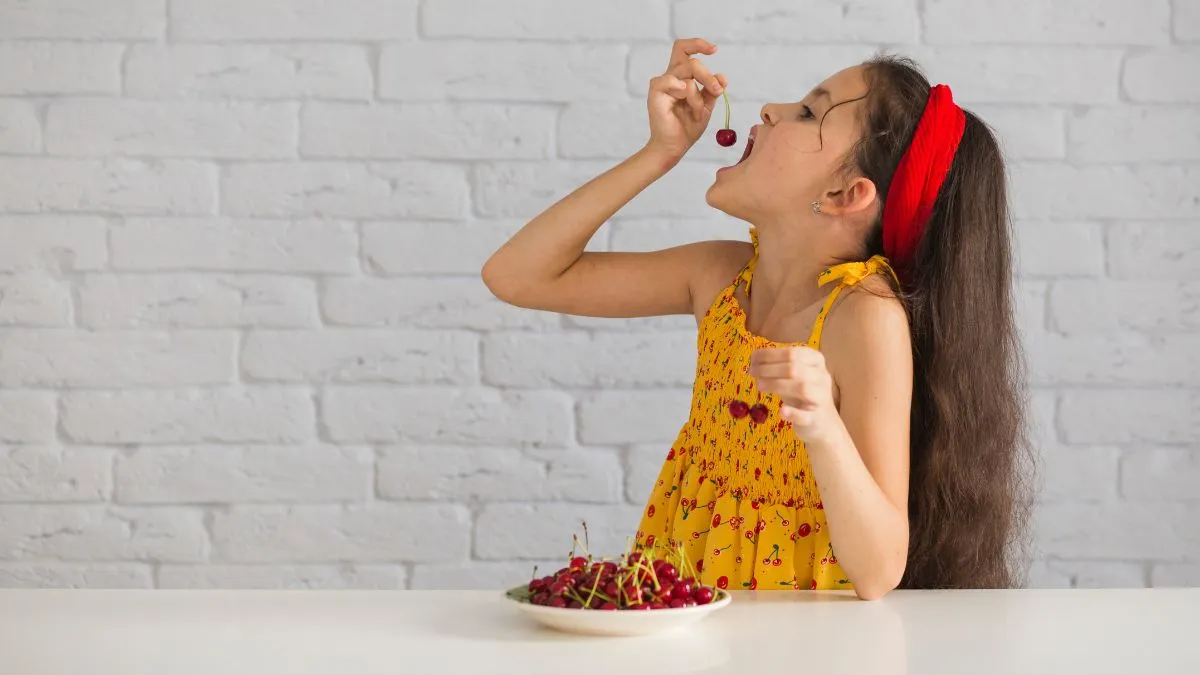
Snacking is a healthy habit, but kids often grab convenience foods that lack nutrition when they feel hungry between meals. The challenge for parents is finding snacks that are not only nutritious but also appealing to kids and practical for busy lifestyles. By making small, mindful swaps to the snacks you offer, you can improve your child's diet and set them on a path toward lifelong nutritious eating. Here's how you can make snacking smarter and good for your child through strategic substitutions.
Table of Content:-
1. The Power of Smart Swaps: From Processed to Wholesome
According to Dt Sagarika Garg, Nutritionist, Tata Soulfull, “Helping your child snack better can be as simple as swapping ingredients. Choose homemade oat cookies instead of sugary ones, baked veggie chips or roasted chickpeas over regular chips, and fresh fruit with yogurt dip instead of packaged fruit snacks. These options are just as convenient and tasty, with no junk, less sugar, while giving essential nutrients for growth and development.”
2. Maida to No Maida: Millets at the Core of Better Choices
One of the most impactful swaps you can make is replacing refined white flour (maida) with nutrient-rich whole grains and millets. This single change can transform empty-calorie snacks into powerhouse nutrition, shows a study published in ResearchGate.
Revolutionary grain swaps:
- Ragi wafers instead of regular wafers- These crispy, flavorful wafers made from finger millet are packed with calcium, iron, and fiber with no palm oil.
- Bajra cookies- Rich in magnesium and antioxidants
Also Read: Here's Why You Should Choose Millet Flours Over Wheat And Maida
3. From Fried to Baked: Maintaining Crunch Without the Guilt
Children love crispy, crunchy snacks, but traditional fried options are loaded with excessive calories. The good news is that baking can deliver the same satisfying texture with significantly better nutrition.
Dt Sagarika Garg suggests these smart fried-to-baked swaps:
- Swap fried potato chips for baked options like sweet potato or beetroot chips.
- Swap fried namkeen with roasted makhana (fox nuts) seasoned with mild spices.
- Choose baked multigrain crackers instead of fried namkeen mixtures with no palm oil.
- Baked alternatives retain the crunch factor while reducing trans fats and oil, making them gentler on the body.
4. Protein and Healthy Fats: The Satiety Factor
According to a research published in the Food Reviews International journal, adding protein and healthy fats to snacks helps children stay satisfied longer and supports crucial developmental needs.
Protein-packed swap ideas:
- Greek yogurt with berries instead of flavored pudding cups
- Trail mix with nuts and seeds instead of candy mixtures
- Hard-boiled eggs with mild seasoning instead of meat snacks
5. Making Healthy Appealing: The Visual Victory
“Children eat with their eyes first, so presentation can make or break a healthy snack's success. The goal is to make nutritious options as visually appealing as their processed counterparts,” shares Dt Sagarika Garg.
Creative presentation ideas:
- Rainbow veggie sticks arranged by color with colorful dips
- Fruit kabobs that look like mini celebrations on a stick
- Mini veggie wraps cut into pinwheels for easy handling
- DIY snack boxes with compartments featuring different healthy options
Involving children in the preparation process increases their investment in eating the snacks they've helped create.
Also Read: Expert Shares Fun And Nutritious Way to Boost Your Child’s Health With Rainbow Diet
6. Portion Control and Mindful Eating
Even nutritious snacks can contribute to overeating if portions aren't considered. Teaching children to recognize hunger and fullness cues while enjoying nutritious snacks builds lifelong healthy relationships with food.
Practical portion strategies:
- Use small bowls or containers to naturally limit portions
- Encourage slow eating and conversation during snack time
- Offer snacks at regular intervals rather than continuous grazing
- Focus on quality over quantity- nutrient-dense snacks satisfy with smaller portions
Summing up, Dt Sagarika Garg highlights that encouraging children in making balanced snacking choices can be achieved through small, practical steps. Simple changes, such as selecting baked instead of fried options or including more whole grains and millets, can gradually make daily snacking mindful. These choices don’t have to be complicated, and over time, they can encourage wholesome eating patterns in a way that feels natural and sustainable for families.
Also watch this video
FAQ
What are smart snacks?
Smart snacks are nutritionally rich and convenient foods that provide an instant energy boost. These help in preventing hunger pangs and overeating at meals.What are healthy snacks for kids?
The healthiest snacks for kids are fresh fruits like berries, apples, yoghurt, eggs, cheese, whole grain crackers, whole wheat toast with nut butter, to name but a few.
How we keep this article up to date:
We work with experts and keep a close eye on the latest in health and wellness. Whenever there is a new research or helpful information, we update our articles with accurate and useful advice.
Current Version
Oct 27, 2025 13:59 IST
Published By : Chanchal Sengar